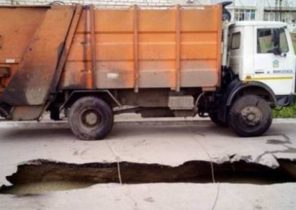
On the background of Breccia and lack of concrete projects the European Union was on the verge of paralysis. In 2017, economic growth may even decline relative to the year 2016, slowing down thereby reducing unemployment.
The summit was supposed to be a symbol of recovery. Temple the future of Europe a few months later after Breccia. Collection of last resort, designed to get silenced skeptics who are becoming more with the approach planned for spring and fall elections in France and Germany.
Alas, Italian Prime Minister Matteo Renzi best of all summed up the September EU summit in Bratislava, “a Beautiful ballad on the Danube”. And nothing more. For the umpteenth time. Even worse, the cracks went not only between the Thrifty North and mired in spending the South, but openly euroskeptic East (led by Poland and Hungary) and the heavyweights of the continent (primarily France and Germany), which is unable to provide a specific project. Europe was hit by the paralysis, and the growth of its economy may be lower than in 2016.
The end of favorable market conditions
Emerging in recent months, the rise has already been shaken, but most institutions have chosen the growth forecasts downward. The experts of BNP Paribas are now saying only about 1.1 percent (at best) for the Eurozone compared to 1.5% in 2016 and 1.9% in 2015. It is worth noting that the beneficial effect of the “parade of planets” (the depreciation of the Euro, the collapse of interest rates and the fall in oil prices) is depleted.
Worse, some of the “planets” can send adverse wave. So, the Euro (the decline of his quotes ended) can become a victim of currency war in the event of escalation of trade tensions between the US and China. Interest rates already close to zero, and the potential for further reductions is practically absent. Finally, the price of oil is up, this should be reflected in inflation in most countries.
“The growth of purchasing power in 2017 will be everywhere lower than in 2016, which will impact on consumption,” says economist Axa IM, Laurent Clavel (Clavel Laurent). With the possible exception of Germany, where approved in July, the pensions increase (+5%) and minimum wages (+4%) in 2017 raises the purchasing power is not the most affluent.
In Spain a positive impact on exports from the reduction in the cost of salaries begins to dwindle and the poor quality of jobs created, especially in the service sector could become a drag on consumption. “The share of fixed-term labour contracts now accounts for 26% of all employment in Spain vs. 15% on average in the Eurozone,” says Katrin Stephan (Stephan Catherine) from BNP Paribas. As for the rise of the Italian labour market (it was created 600 000 jobs from 2013), it still had no effect on consumption.
Businesses are waiting
Thus, economic growth on the continent will depend on the investment of enterprises. However, political uncertainty and instability in global demand will force them to wait.
Even in France, where the combined effects of the Covenant of responsibility and measures to promote competitiveness may mean for businesses a reduction in contributions by almost 40 billion euros in 2017. In England, economic activity is not affected by Breccia. Moreover, the collapse of the pound is helping exporters, and the Bank of England only further eased its monetary policy to avoid sudden braking. However, inflation could become a threat. In 2017 and 2018 it can go up to 2.7%, hitting the most purchasing power.
In the North, the rebellious Iceland, which was brought to its knees by the financial crisis of 2008, dropped into the abyss of its bloated banks, markedly on the mend, thanks to the collapse of the national currency. The output for it was tourism, which now accounts for 10% of GDP. Here it is, proof that the banking crisis is not the end!







